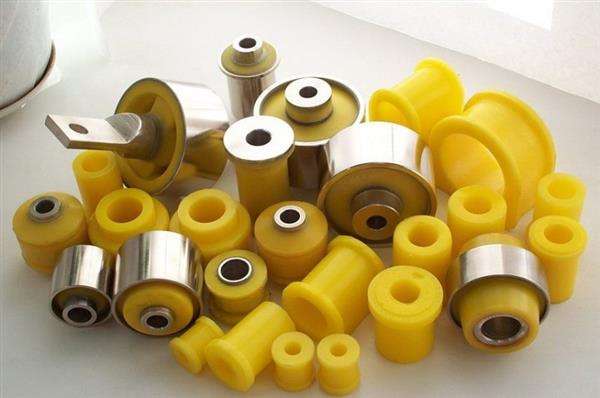Yesterday you were quietly moving along the city streets, and today you “catch” every pothole under the accompaniment of “mournful” knocking of the suspension? Alas, you cannot do without intervention. And one of the most probable reasons is a failed bushing. Why do we need silent blocks, why they break, when to replace them and the main thing: what to buy rubber silent blocks or “fancy” polyurethane ones? Let’s talk about this and more in this article.

The purpose of silent blocks and the causes of their failure
In essence, silent blocks are the links between the parts of the suspension, and their main purpose is to minimize vibrations and give the car stability and softness of motion.
The bushing is a pivot, consisting of two metal bushes and a rubber or polyurethane insert, which “swallows” all the shocks of the suspension. When they say “failed silentblock”, they almost always mean damaged rubber (polyurethane) part – it is this part, but not framing metal elements, subject to wear, deformation and accelerated aging. Among the main “enemies” of silentblocks are temperature and chemical influences together with illiterate installation and excessive tightening of bolts. All this leads to “overloading”, reducing the service life of the part by several times and, as a consequence, putting you before the need for replacement.
How are polyurethane silentblocks better than rubber ones?
Many motorists openly vote for polyurethane silentblocks: due to the harder material they are able to withstand sudden temperature changes, do not dry out in the heat, do not crack in the cold and in general are “tougher” than their rubber counterparts.
However, if everything were so unequivocal, the debate about the choice has long been out of the question. The matter is that these seemingly unambiguous advantages have a flip-side: increased hardness leads to rather hard driving, less plasticity forces polyurethane bushing to “work” several times (where rubber bushing “would cope” with the first), and at subzero temperatures the part can “harden” and break… Besides, the price for polyurethane parts is considerably higher.
However, if you are still undecided whose “side” to take, see some arguments in favor of these and other options.
Three reasons to buy rubber silentblocks
They are more habitual – the car is assembled with them and has had a good run until recently. In a word, “don’t look for the good from the bad”.
They are cheaper – the price of decent rubber silentblocks differs from more or less decent polyurethane ones by times.
They are softer – if you are a follower of measured riding and comfort, with polyurethane parts can simply “not meet the characters”.
Three reasons to buy polyurethane silent blocks
They are more reliable – more durable, less finicky, what more do you need?
They’re more durable – pay once and enjoy your ride without worries, replacements and constant maintenance checks.
They are safer – with them you “feel” your car better and drive with more confidence. And on the road, you must agree that safety is paramount.
